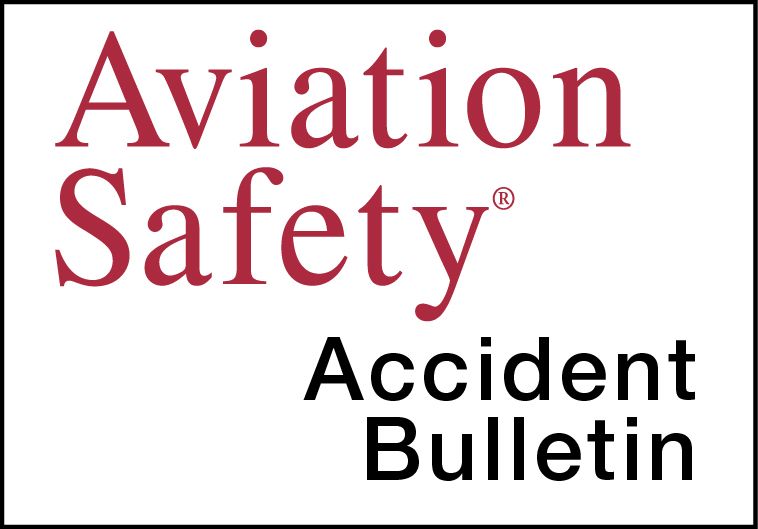AVweb’s General Aviation Accident Bulletin is taken from the pages of our sister publication, Aviation Safety magazine. All the reports listed here are preliminary and include only initial factual findings about crashes. You can learn more about the final probable cause on the NTSB’s website at www.ntsb.gov. Final reports appear about a year after the accident, although some take longer. Find out more about Aviation Safety at www.aviationsafetymagazine.com.
June 1, 2023, Pellston, Mich.
Piper PA-28-181 Archer II/III
At about 1155 Eastern time, the airplane sustained substantial damage when its left main landing gear strut failed, leaving the wheel assembly attached only by the brake line. The flight instructor and student pilot were not injured in the subsequent landing.
On takeoff following a touch-and-go landing, the pair “heard an unusual noise.” As they maneuvered for a precautionary landing, the airport manager radioed that the left main landing gear wheel assembly was hanging from the landing gear strut. The flight landed at an airport with better fire and rescue services. Examination revealed the landing gear strut housing was fractured at the upper torque link connection.
June 1, 2023, Statesboro, GA
Beech V35A Bonanza
The airplane struck a light pole and came to rest short of the runway threshold at about 1455 Eastern time. The pilot received minor injuries.
The flight’s purpose was to test the newly installed servos for the Garmin GFC-500 autopilot and calibrate the fuel flow sensor. During the takeoff, the pilot noticed the controls felt “slightly heavy,” so he used the electric trim to lighten them. The autopilot climbed and maintained the selected altitude of 3000 feet MSL. After an hour of testing the autopilot in heading mode, he programmed a descent to 2000 feet and selected the autopilot’s nav mode to return.
During the approach, the autopilot did not respond, so the pilot disconnected it and flew by hand. As he applied engine power, the nose suddenly pitched steeply down. The pilot “struggled to control the airplane” and was “fighting” the unresponsive yoke. On final, the pilot was unable to arrest the descent before striking the light pole.
June 2, 2023, Gibbon, Neb.
Van’s RV-7 Experimental
At about 0907 Central time, the airplane was destroyed when it collided with terrain after reporting airframe ice in an area of extreme precipitation. The pilot was fatally injured. Instrument conditions prevailed; an IFR flight plan had been filed.
About two hours after departing Denver, Colo., at 15,000 feet MSL, the pilot encountered ice and requested a lower altitude. Shortly after the descent began, ATC advised him of “extreme precipitation” in the area. The pilot did not respond. Dashcam footage captured the airplane descending nose-down in heavy rain before impact. Weather radar at the time of the accident depicted heavy precipitation and thunderstorms in the vicinity.
June 3, 2023, Albertville, Ala.
Zenith 601XL Experimental
The amateur-built experimental airplane was substantially damaged at 1320 Central time when it collided with terrain, apparently out of control. The solo commercial pilot was fatally injured.
Several witnesses near the accident site reported the airplane appeared to “porpoise” several times. The engine then increased to full power and the airplane nosed over into a vertical descent before disappearing behind trees, coming to rest inverted. All major components were located at the accident site. Control continuity was confirmed, as was the engine’s mechanical condition. The elevator trim and associated servo were found in the full nose-down position. According to witnesses, the pilot had just completed the airplane build and was operating the airplane as a test flight.
June 4, 2023, Oklahoma City, Okla.
Beech A36 Bonanza
At 1215 Central time, the airplane was force-landed about a mile from the intended airport after its engine quit, apparently for fuel-related reasons. The airline transport pilot and the passenger were uninjured.
The pilot later stated that both fuel gauges indicated a little less than half full before takeoff. The pilot flew the airplane about 12-15 miles west of the departure airport to maneuver and, after about 10-15 minutes, returned for landings. Approaching the airport, the pilot switched from the left to the right tank. The left fuel gauge indicated just above the yellow arc while the right one showed about 3/8 of a tank. On the base leg for landing, the engine began to run rough. The pilot switched tanks again, turned on the boost pump and “tried the ignition,” but was unable to restore engine power. Both wings and the horizontal stabilizer were damaged.
This article originally appeared in the September 2023 issue of Aviation Safety magazine.
For more great content like this, subscribe to Aviation Safety!


































